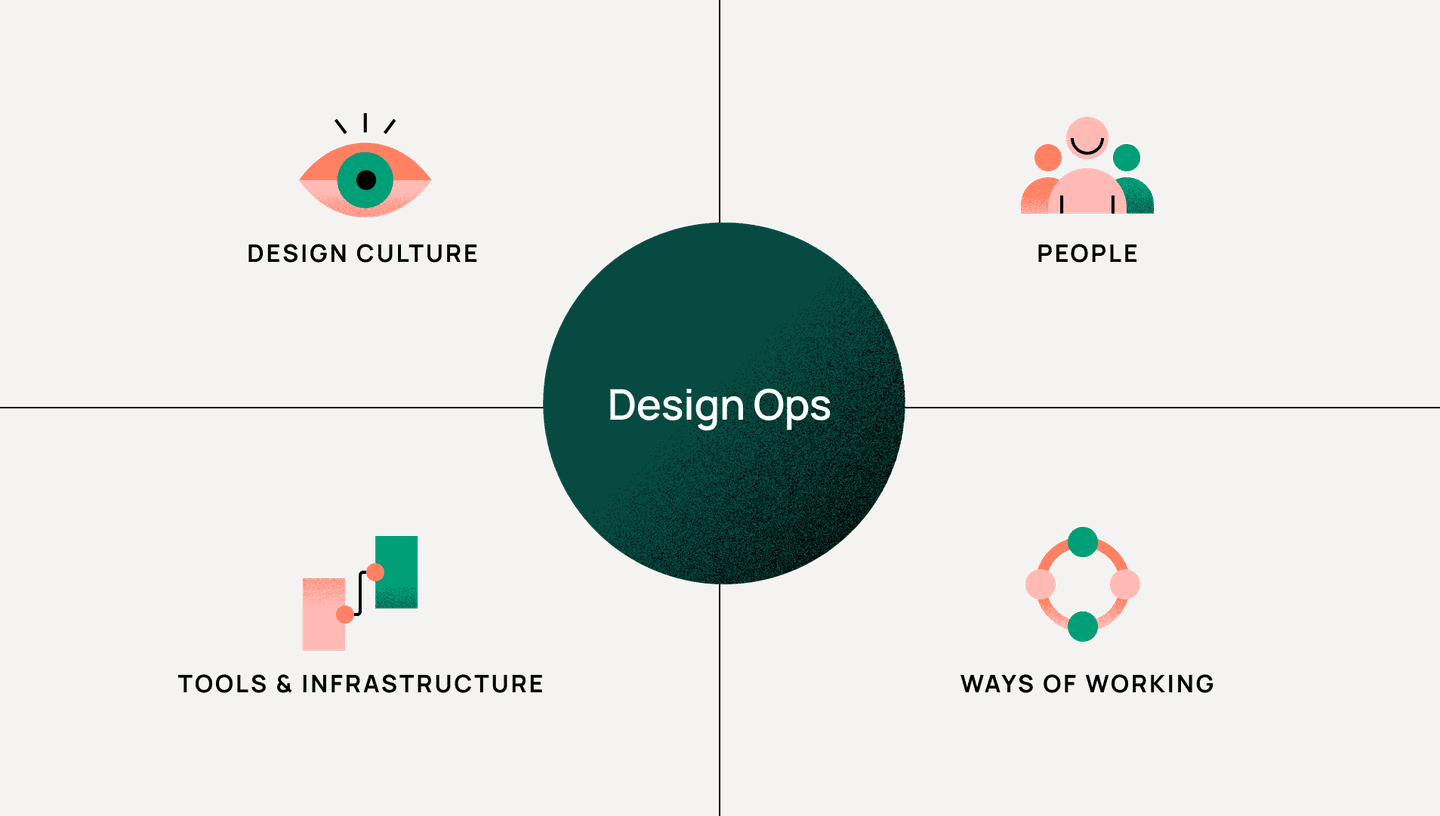Amplifying the value of design: An introduction to Design Operations
In today's business landscape, organizations are increasingly recognizing the importance of design in driving business success. However, the challenge often lies in effectively harnessing the power of design, especially as companies scale and grow. This is where Design Operations, or DesignOps, comes into play.

What is DesignOps
DesignOps refers to the orchestration and optimization of people, processes, and craft to amplify design's value and impact at scale. The primary mission of DesignOps is to set up design teams for success by establishing a clear design culture, efficient people operations, streamlined workflows, and effective tools. It ensures that designers can concentrate on their work instead of grappling with operational challenges.
DesignOps focuses on four key layers: Design Culture, People, Ways of working, and Tools & Infrastructure.

Design culture: A strong design culture is pivotal to the success and health of design teams. DesignOps emphasizes the importance of defining the purpose of the design team, promoting a culture of sharing insights and expertise, and establishing strong collaboration across departments.
People: Effective people operations contribute to the long-term health of design teams. DesignOps addresses this by role mapping, defining career growth paths for designers, and streamlining recruitment and onboarding processes.
Ways of Working: DesignOps focuses on streamlining workflows and improving design processes, considering process & operating rhythm, enhancing teamwork and communication within and across teams, and facilitating knowledge sharing and continuous improvement.
Tools & Infrastructure: In the complex landscape of design tools, DesignOps ensures standardization, addressing storage, licenses, and device management, and providing training to ensure designers are proficient in using the tools at their disposal.
Why DesignOps is important
Traditionally, design was seen as a linear step in the product development chain, disconnected from other business functions. However, the paradigm has shifted, and design now permeates throughout the entire product development and delivery process. Design maturity, a measure of how well design practices are integrated into business processes, has become crucial for positive outcomes in product, position, and profit. Companies with mature design functions can directly link their design teams' work to increased revenue. As design maturity grows within an organization, the need for a systematic approach to design management becomes paramount.

How to proceed with DesignOps
Embarking on the journey of implementing DesignOps requires a thoughtful and strategic approach. The process for DesignOps is unique to every organization, but it usually has three phases:
1. Current state analysis The initial step in the DesignOps implementation journey involves a comprehensive examination of the current design landscape. This analysis delves into existing design processes, tools, and team dynamics. By identifying pain points and areas for improvement, organizations gain valuable insights that serve as the foundation for designing a more efficient and collaborative future.
2. Defining the DesignOps vision With a clear understanding of the current state, the next stride in DesignOps implementation is the articulation of a vision. This vision outlines the desired state of design operations within the organization including all four layers of DesignOps: design culture, people, ways of working, and tools & Infrastructure.
3. Pilot and scale the model Once the vision is defined, organizations can embark on pilot projects to test the effectiveness of DesignOps initiatives in a controlled environment. This phase allows for adjustments and refinements based on real-world feedback. Successful pilot projects serve as the springboard for scaling the DesignOps model across the organization. This phased approach ensures that DesignOps becomes an integral part of the organization's design culture, driving continuous improvement and innovation.
Conclusion
DesignOps plays a pivotal role in amplifying the value of design within organizations. By focusing on culture, people, workflows, and tools, DesignOps ensures that design teams can scale efficiently and deliver impactful outcomes. As organizations continue to recognize the strategic importance of design, investing in DesignOps becomes not just a choice but a necessity for sustainable growth and success.
 Sami HaikonenDesign Director
Sami HaikonenDesign Director


